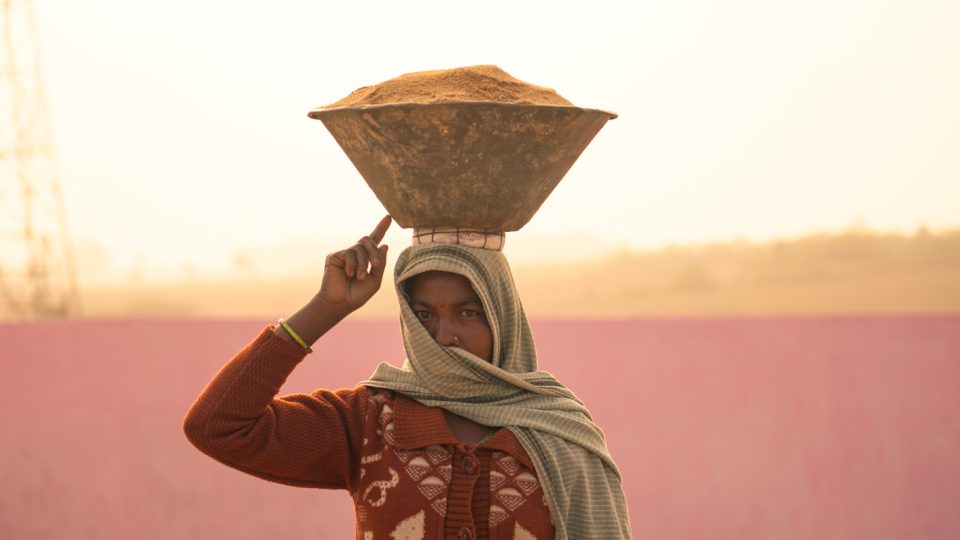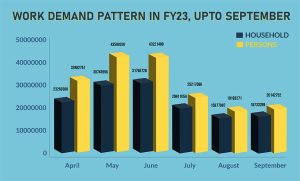
MGNREGA demand dip: Sign of better employment rate or rising rural distress?
The drop in job demand till August is due to ‘erosion of confidence’ in scheme, while marginal rise in September points to increased distress, say activists

The Mahatma Gandhi National Rural Employment Guarantee Act (MGNREGA) is credited with having staved off hunger for lakhs of rural households during the pandemic. Its recent numbers, though, have left the Union government and activists divided.
For three months up to August 2022, the demand under the scheme went down. While the Centre viewed the lower demand as a sign of falling unemployment, rural welfare experts and activists said it was just an indication of eroding public confidence in the job scheme.
Also read: States to be put on anti-corruption leash for MGNREGA fund dues
On September 17, after the monthly economic review, the Union Finance Ministry claimed that the unemployment rate in India’s rural areas had started diminishing in May. The rate was the lowest for the month of August under MGNREGA. The government attributed the drop in demand to a rise in agricultural and non-agricultural activities.
Government’s claim
An improved rural economy, with increasing agricultural and non-agricultural jobs, had led to a reverse migration from urban centres and was weaning people off the Central job guarantee scheme, said the ministry.

The demand for work under MGNREGA fell in August and inched closer to pre-Covid levels, suggesting stability in the labour market. Data showed that the household demand for work under the scheme fell 41.2% in August to 1.58 crore, against 2.70 crore in August 2021. Similarly, individual demand fell 40% to 1.90 crore from 3.17 crore. This is much closer to the pre-pandemic level — 2019-20 — when household and individual demand for work stood at 1.45 crore and 1.82 crore, respectively.
Also read: MGNREGA: Allegations of corruption, threats, TMC interference in Bengal
Likewise, month-on-month work demand under MGNREGA in August was also the lowest in this fiscal, with household demand declining by 22.5% during the month compared to July.
Eroding confidence
However, activists said the fall was just an indication of people losing confidence in the scheme due to delayed payments. Central allocation to states under the scheme has been falling, and this has led to payment delays.
The payment to states has fallen with a decrease in budgetary allocation. For 2022-23, the budgetary allocation for MGNREGA was ₹73,000 crore, 25% lower than 2021-22’s revised estimate of ₹98,000 crore. It is estimated that MGNREGA, in fact, requires a 2022-23 budget of around ₹2.64 lakh-crore.
Saying that there’s no way unemployment could be falling, activists pointed to monthly data published by the Centre for Monitoring Indian Economy (CMIE), a Mumbai-based think-tank. Per CMIE data, unemployment rose 7.7% in August.
Many rural workers are keeping off the scheme due to low budget allocation, unremunerative NREGA wages, and long payment delays, said a Newsclick report quoting an NREGA Sangharsh Morcha (NSM) statement. Last month, NSM conducted a three-day campaign, called Kaam Do Abhiyaan, under which thousands of rural workers carried out demonstrations across districts in 13 states.
Twist in the tale
Even as the falling numbers in May-August were triggering debate, the September numbers threw a googly. The demand went up 5%, against the August figures, said an Economic Times report.
Also read: Why Stalin should address corruption first before raising MGNREGA work days
September demand under MGNREGA was 1.7 crore under the household segment and 2 crore under the individuals segment. This was higher than pre-Covid levels, but lower than September 2021.
Activists said the numbers have risen despite the Centre’s efforts to ‘artificially suppress’ demand under the scheme. This, they said, is a worrying proof of rising rural distress. The ‘real demand’ could be much higher, said the Newsclick report quoting activists.
The October numbers, indicating demand around the festival season, when household expenses tend to go up, may establish which way the rural economy is going.


